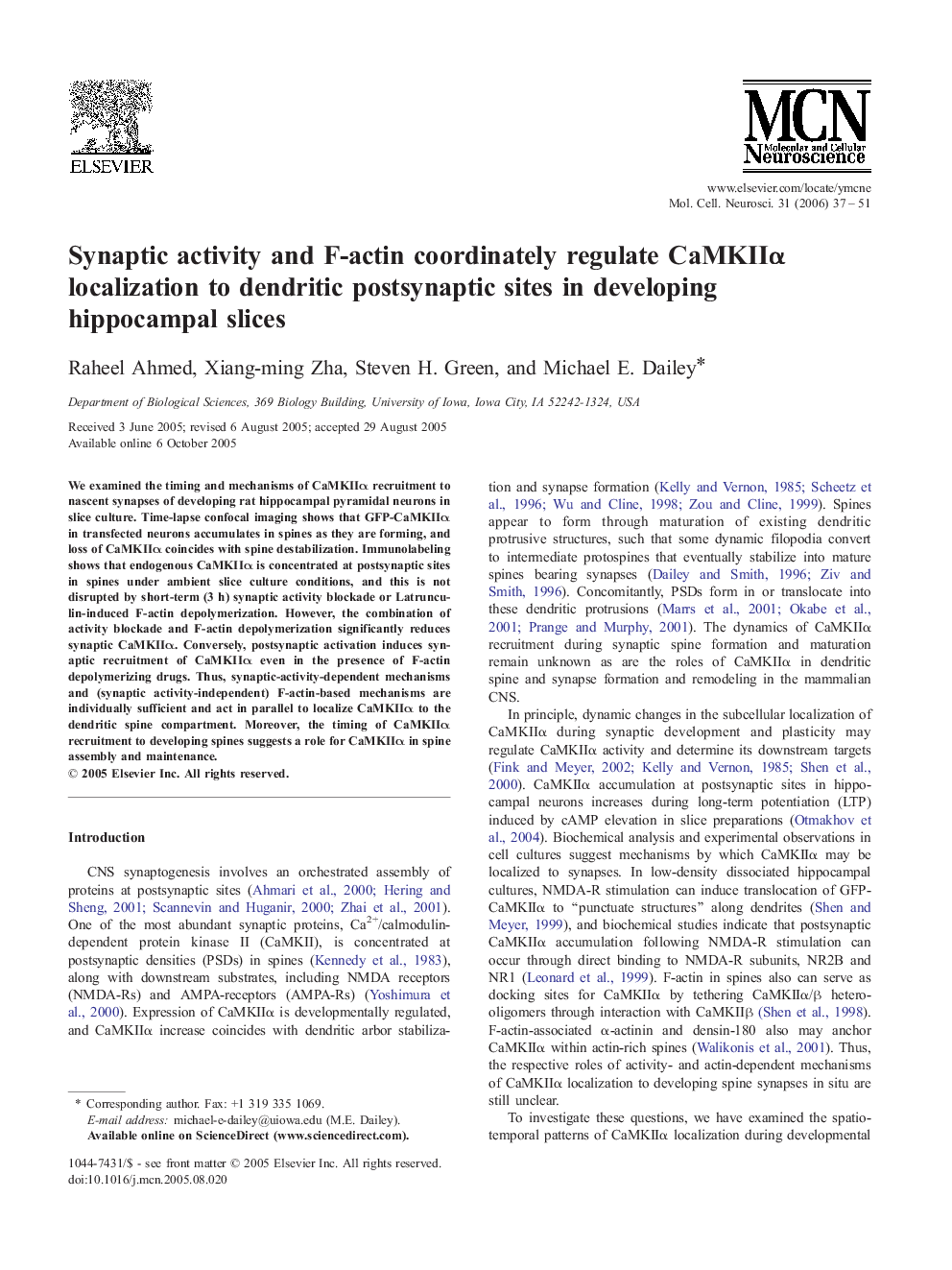| Article ID | Journal | Published Year | Pages | File Type |
|---|---|---|---|---|
| 2199528 | Molecular and Cellular Neuroscience | 2006 | 15 Pages |
We examined the timing and mechanisms of CaMKIIα recruitment to nascent synapses of developing rat hippocampal pyramidal neurons in slice culture. Time-lapse confocal imaging shows that GFP-CaMKIIα in transfected neurons accumulates in spines as they are forming, and loss of CaMKIIα coincides with spine destabilization. Immunolabeling shows that endogenous CaMKIIα is concentrated at postsynaptic sites in spines under ambient slice culture conditions, and this is not disrupted by short-term (3 h) synaptic activity blockade or Latrunculin-induced F-actin depolymerization. However, the combination of activity blockade and F-actin depolymerization significantly reduces synaptic CaMKIIα. Conversely, postsynaptic activation induces synaptic recruitment of CaMKIIα even in the presence of F-actin depolymerizing drugs. Thus, synaptic-activity-dependent mechanisms and (synaptic activity-independent) F-actin-based mechanisms are individually sufficient and act in parallel to localize CaMKIIα to the dendritic spine compartment. Moreover, the timing of CaMKIIα recruitment to developing spines suggests a role for CaMKIIα in spine assembly and maintenance.
